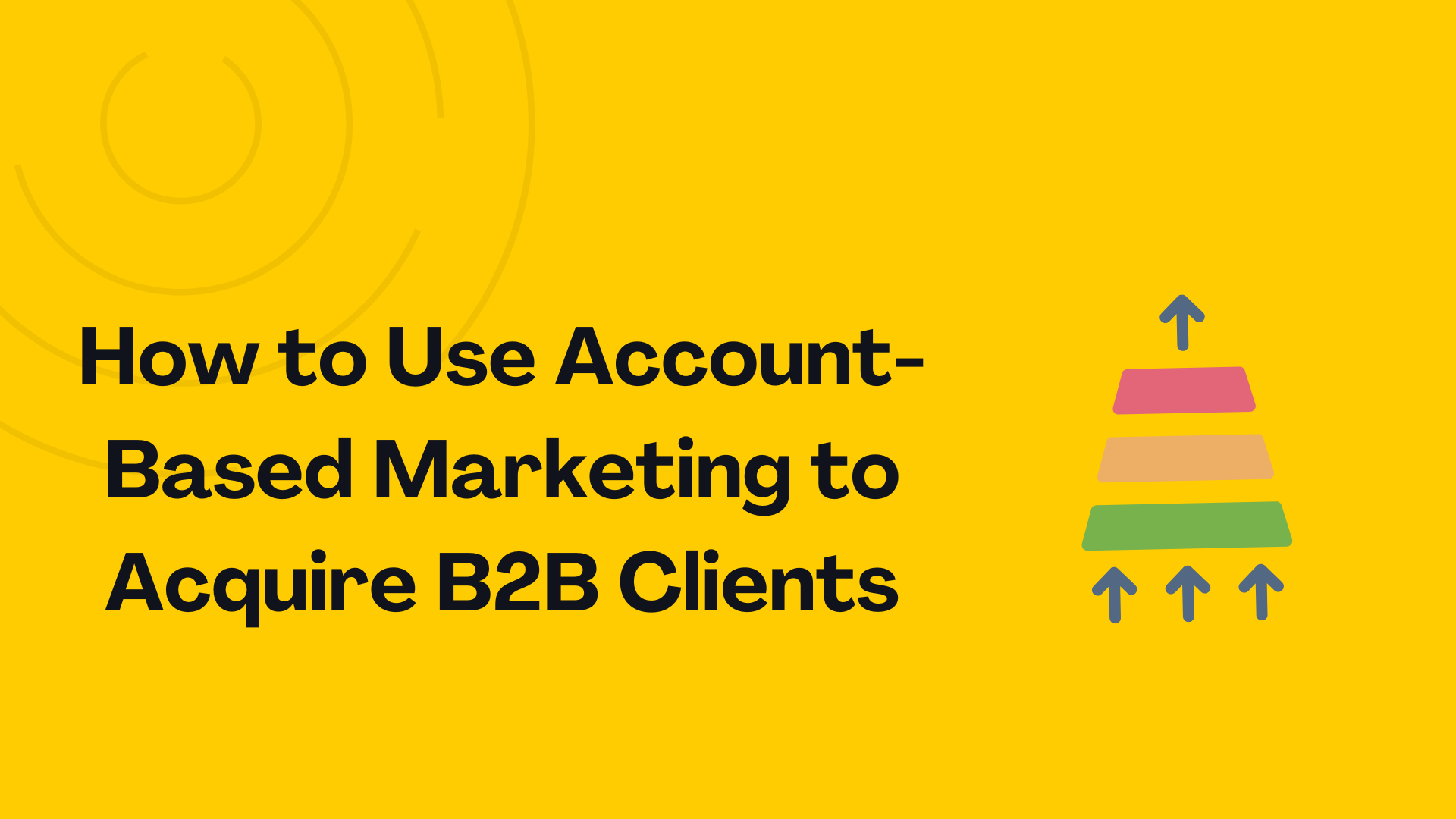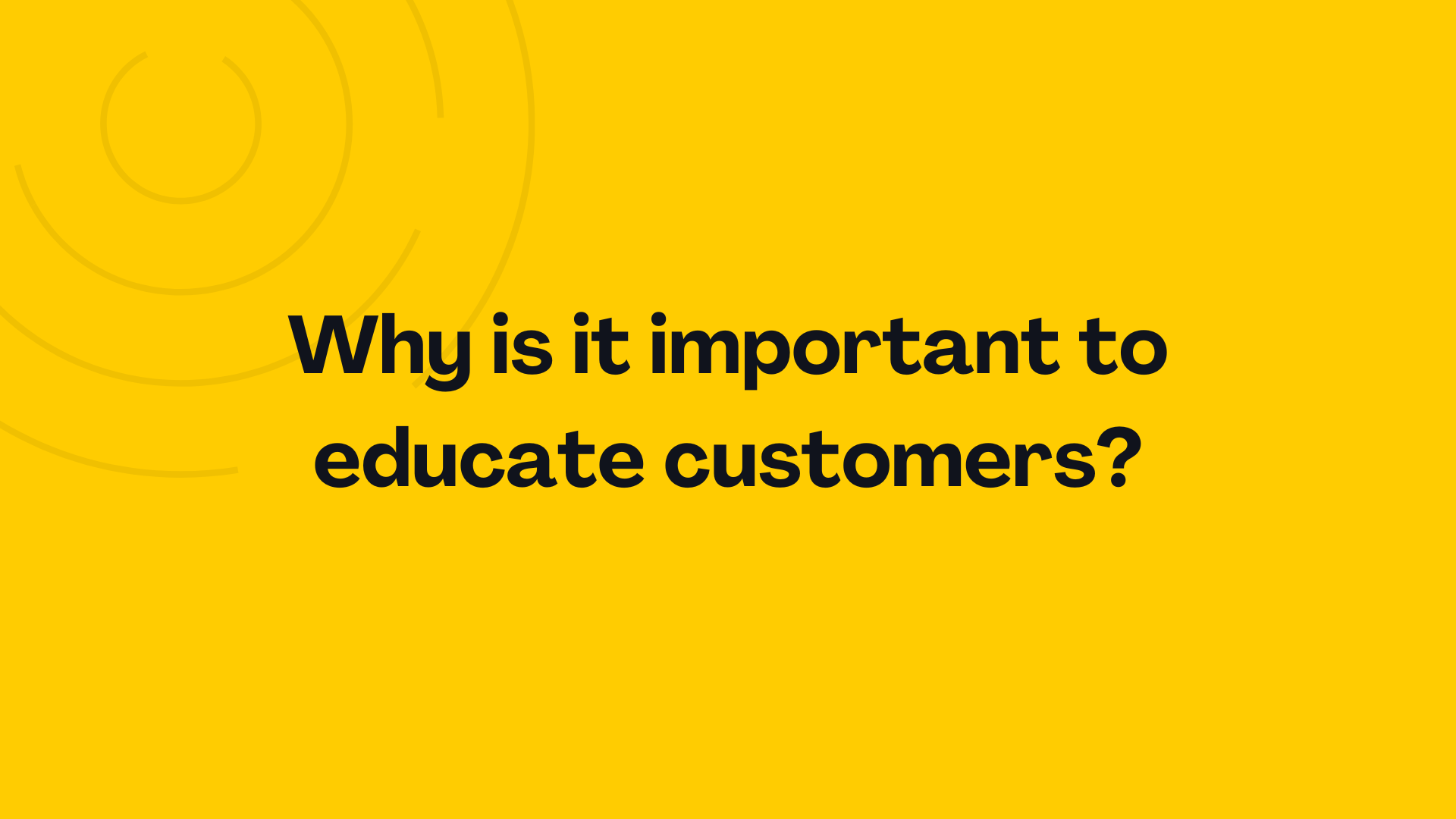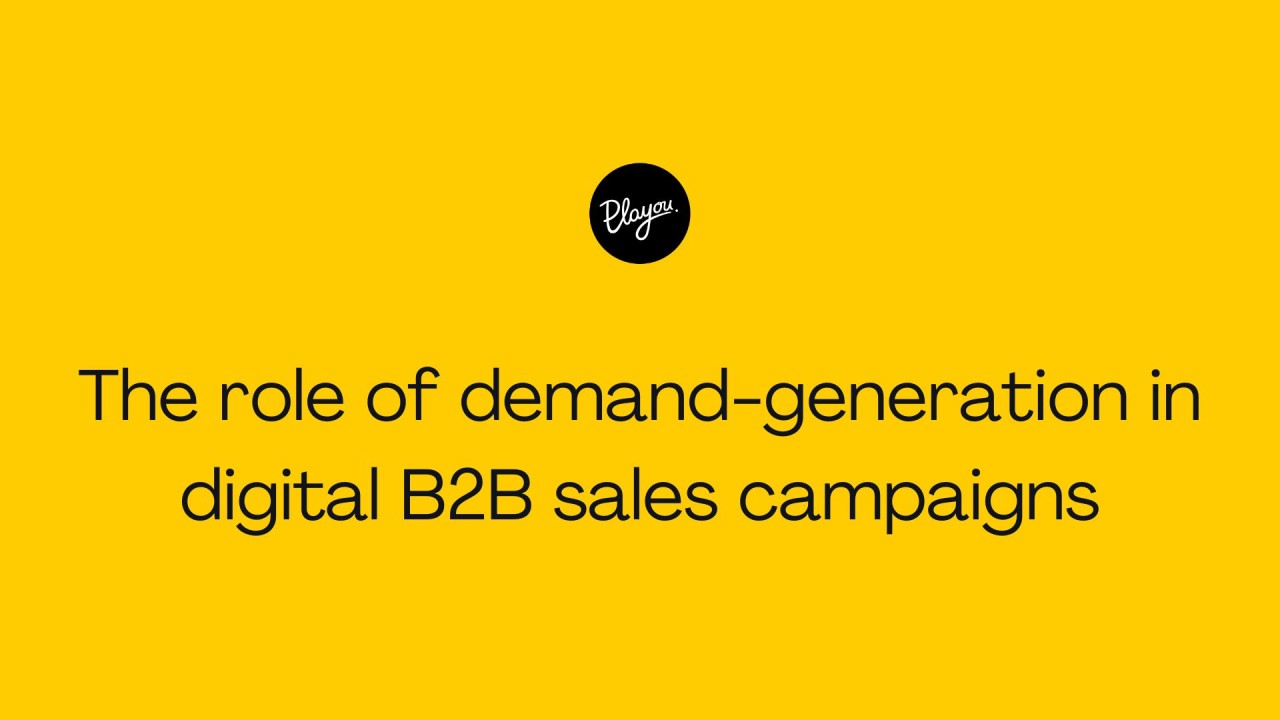Introduction
Do you offer products or solutions worth hundreds of thousands or even millions of crowns and seek an effective way to reach the right customers? In this article, you’ll learn how to leverage Account-Based Marketing (ABM) to achieve your goals.
ABM is a marketing strategy focused on highly targeted campaigns and building relationships with key companies. This approach is ideal for businesses selling expensive products or complex solutions.
What is Account-Based Marketing (ABM)?
ABM is a marketing strategy that targets identifying and approaching specific companies most important to your business. Instead of trying to reach a broad audience, you concentrate your efforts on a smaller group of key companies with which you aim to build long-term relationships.
Why is ABM Ideal for B2B Business Expansion?
If you’re selling expensive products or complex solutions, it’s crucial to reach the right companies. ABM allows you to:
-
- Better Targeting – Focus on companies with the highest potential to become your customers.
-
- Personalized Campaigns – Create campaigns that cater to the specific needs and interests of target companies.
-
- Higher ROI – Achieve higher returns on your marketing investments through better targeting and personalization.
-
- Easy Implementation – ABM is straightforward to implement and fully aligns with sales priorities.
-
- Focus on Relevant Contacts – ABM ensures that salespeople don’t waste time contacting leads that aren’t relevant, allowing them to focus on high-value contacts.
What Are the Stages of ABM Campaigns?
ABM transforms the traditional marketing funnel or lead generation strategies by focusing on specific companies from the start. This approach has four key stages: Identification, Engagement, Relationship Building, and Measurement.
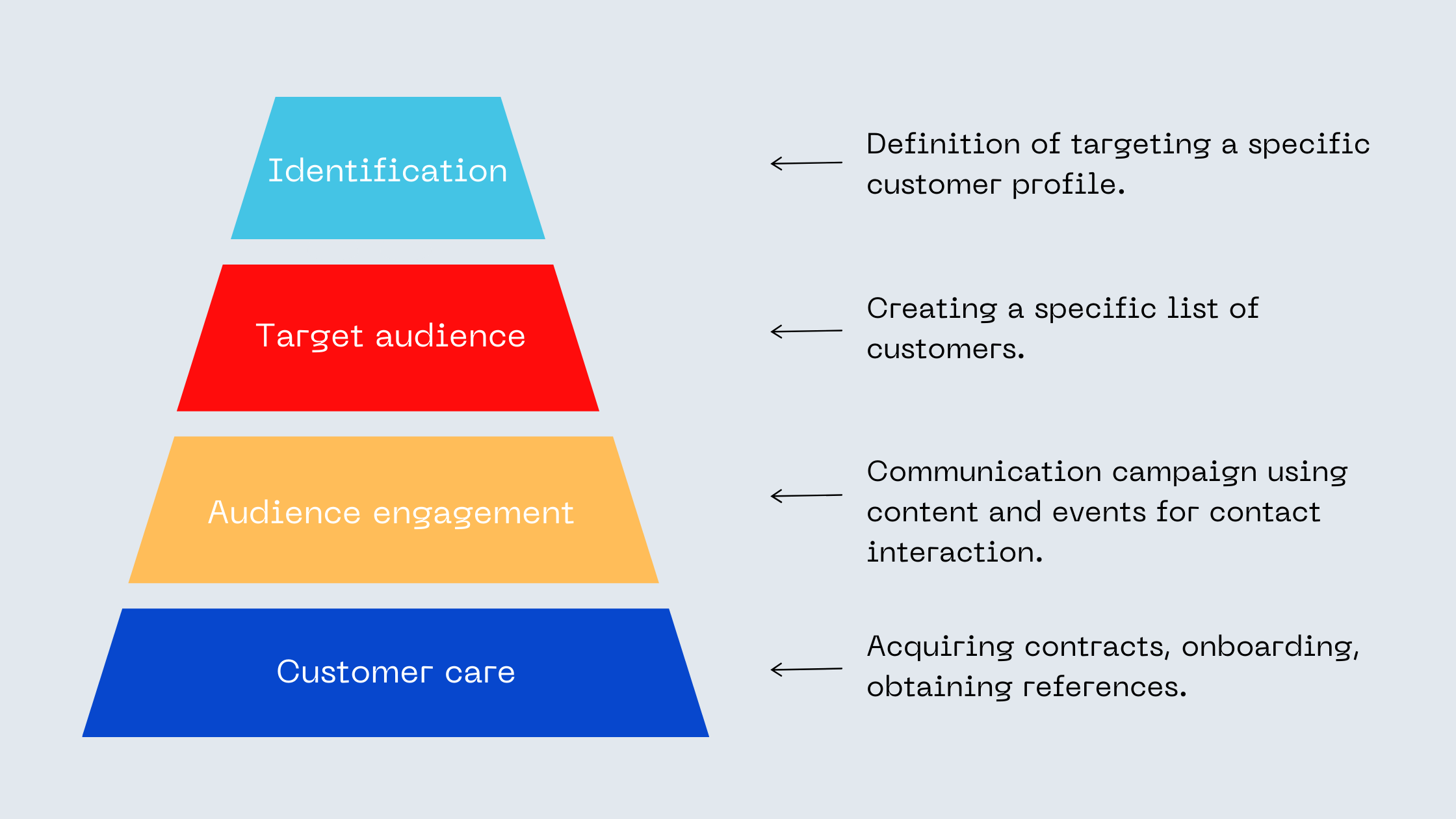
Framework Model of ABM
-
- Identifying the Target Audience: In this phase, you identify specific companies most relevant to your business. Instead of targeting a broad audience, you focus your efforts on a smaller group of potential key customers. Using data and analytics, you create a list of target companies to approach.
-
- Content Marketing: Once you have your list of key companies, it’s time to direct your marketing activities specifically towards them. This may include personalized campaigns, tailored content strategies, and highly targeted ads designed to engage decision-makers in these companies.
-
- Communication with Qualified Contacts: This phase is about building and maintaining relationships with identified companies. Your goal is to create valuable interactions that strengthen relationships and lead to conversions. This can include personalized emails, webinars, meetings, and other activities to increase engagement and loyalty.
-
- Measurement and Optimization: The final phase focuses on evaluating the success of your ABM activities. You track key performance indicators (KPIs) and measure how your campaigns contribute to achieving business goals. This allows you to optimize strategies and increase the effectiveness of your ABM campaigns.
How to Start with ABM Campaigns?
-
- Identify Your Target Audience Profile
The first step is identifying the companies most important to your business. Focus on firms with the greatest potential to become your customers and who might be interested in your products or solutions.
- Identify Your Target Audience Profile
Example: A Czech design company manufacturing office furniture might target coworking spaces in the UK, aiming to sell them unique furniture valuable to their business. The entire campaign will focus on topics relevant to this audience and their decision-makers, from ads, posts, blogs, to website content—all tailored to resonate with coworking space representatives.
Since personalization is key in ABM, consider creating persona profiles for individual decision-makers—not just targeting the right roles and companies, but also understanding the psychographic profiles of individuals. Knowing these profiles allows you to create relevant content that addresses their needs and communicates effectively.
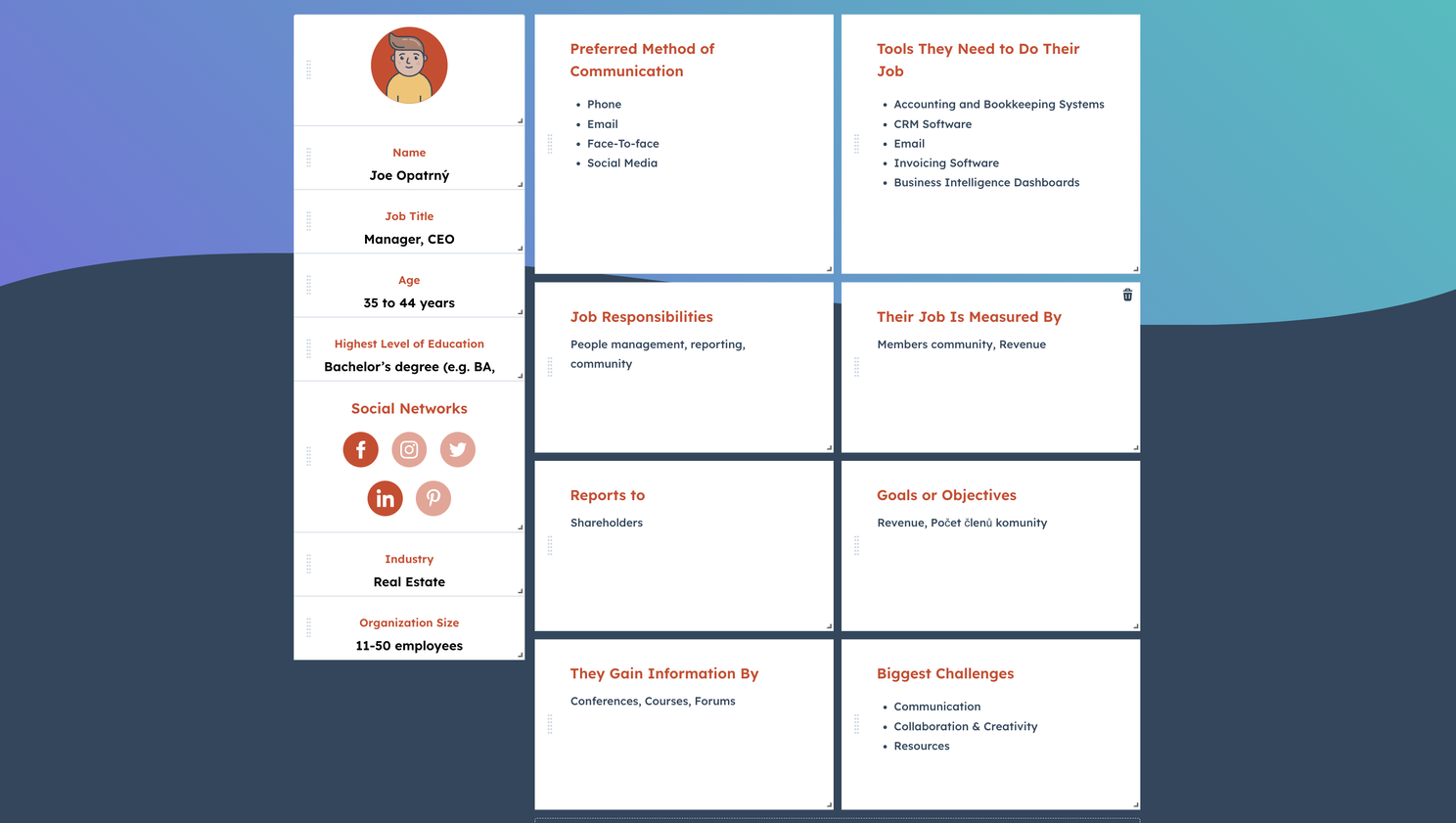
Example of a buyer persona created on: https://www.hubspot.com/make-my-persona
Tip: You can create a Buyer Persona profile using HubSpot tools at https://www.hubspot.com/make-my-persona. To learn more about creating these profiles, check out the blog at https://blog.hubspot.com/marketing/buyer-persona-research
-
- Create a List of Companies to Target
Once you’ve identified companies with the highest potential, it’s time to prepare a specific list of companies for your ABM campaigns. The number of companies is up to you. The goal is to deliver highly personalized messages and content to them. The more tailored your content is to individual companies and people, the more you’ll need to think about segmentation. Selecting a few hundred companies offers enough opportunities while still allowing for thorough personalization of campaigns.
- Create a List of Companies to Target
Tip: Use tools and methods like market analysis, competitor monitoring, online company databases, LinkedIn Sales Navigator, or LinkedIn Ads targeting.
Tip 2: For selecting the right companies, you can use tools that analyze company and decision-maker behavior using third-party data. These tools can help identify or even alert you when a potential customer shows signs of readiness for a purchasing decision. Platforms like 6sense, Uberflip, and Terminus are examples.
-
- Create Personalized Content
Once you have your target companies, the next step is to create personalized content that addresses their specific needs and interests. This can include:
- Create Personalized Content
-
- Landing Pages: Personalized websites focused on delivering maximum value to a specific target audience. These may include product information, educational courses, webinar invitations, or workshops. The goal of such pages is interaction and tracking the behaviour of your target audience.
- Videos: Videos are the most effective medium across all digital channels. Create videos that are relevant to your target audience.
Example of an educational video targeted at a specific B2B audience created by our agency, Playou.
-
- Blog Posts: Write articles addressing specific problems or questions your target companies might have.
-
- Case Studies: Showcase how your products or solutions helped other companies in similar situations.
-
- Webinars: Offer live or recorded presentations showcasing your products or solutions.
-
- E-books: Provide detailed guides or studies offering deep insights into specific topics.
-
- Email Campaigns: Send regular updates, tips, and information to keep your target audience informed and engaged.
-
- Social Media: Create engaging content on social platforms to raise brand awareness and engage your audience.
-
- Paid Social Media Ads: Use paid ads to target specific audiences and increase your brand’s reach.
Tip: If targeting a larger group, you can personalize your content dynamically using various marketing tools like HubSpot, 6sense, or Uberflip.
(Continued with communication strategy examples, campaign launches, and measurement…)
Conclusion
ABM allows you to better understand your potential customers’ needs, create personalized campaigns, and achieve higher returns on investment.
If you’d like to discuss ABM campaign possibilities or marketing technologies post-implementation, feel free to reach out to me.


